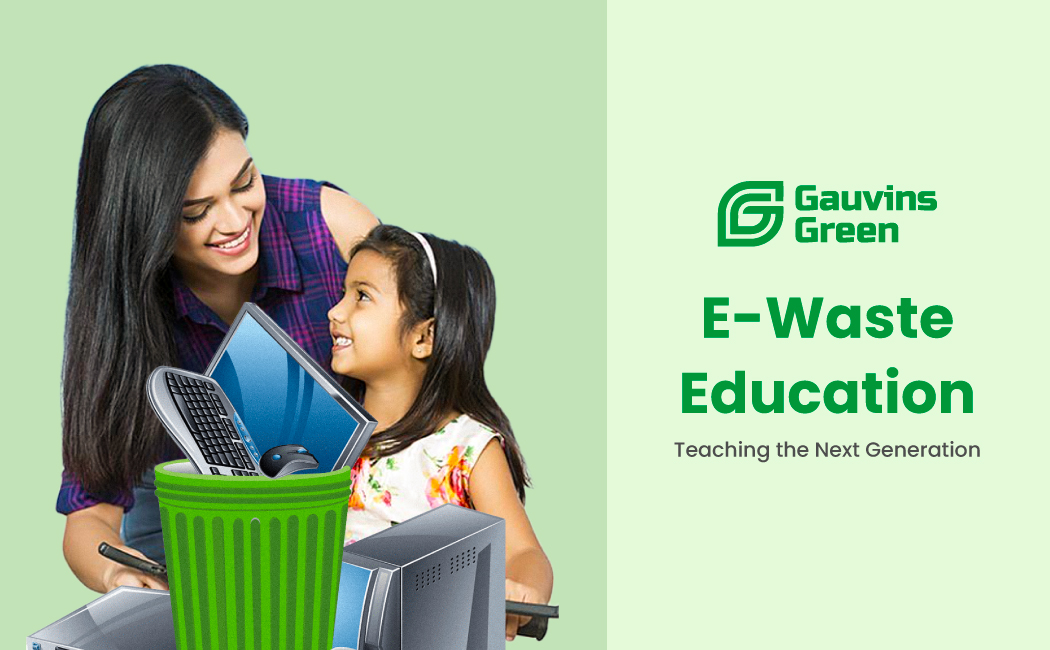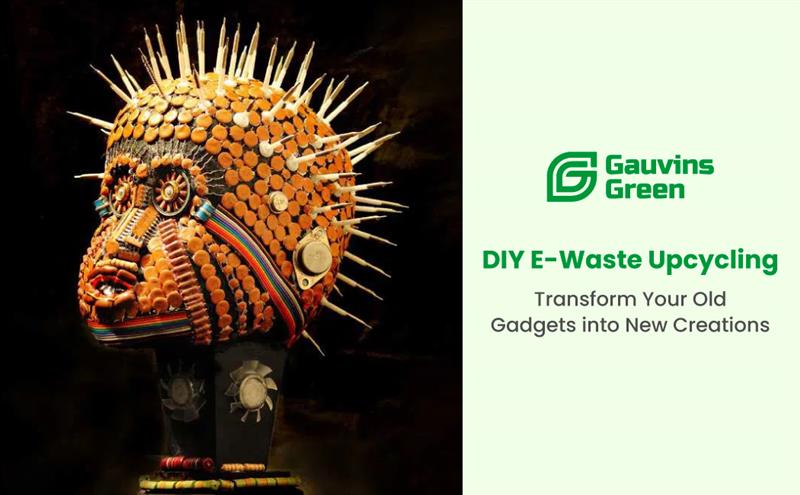In the digital age of monumental leaps in development, technology is developed and designed at an exponential rate, so that our way of life is more interconnected and efficient. On the downside, e-waste has been increasingly emerging as one of the fastest-growing waste streams on the globe as older electronic sets are disposed of to create room for new models.
The environmental impact is high, and this should be addressed by more than simply better techniques of recycling: it demands education, more so with the younger generation. This means creating an awareness of e-waste that can make the next generation think about their electronic use and its implications.
Defining E-Waste
E-waste includes any electronic or electrical waste, for example, old cell phones, computers, refrigerators, and televisions. Because of improper disposal, these gadgets become a potential disaster for the environment. E-waste contains poisonous substances like lead, mercury, and cadmium that may infiltrate the soil and waters, thereby seriously posing health hazards to both man and animals. The e-waste problem is of huge scope. According to the Global E-Waste Monitor 2020, last year the world generated 53.6 million metric tons of e-waste, with this figure bound to rise considerably in the years ahead. Unfortunately, only a small fraction of this e-waste is properly recycled. Most of it is thrown in landfills or is burned, releasing dangerous pollutants in the environment.
Why E-Waste Education is Crucial
Education is, of course, the most robust change agent. Awareness to inculcate environmental responsibility within the youth can be achieved by teaching them the adverse effects of e-waste and the basic protocols for its disposal.
- Environmental Awareness: The education relating to e-waste and its environmental impacts on children to youngsters shapes their understanding of sustainable activities. It makes them understand that the actions they take have a long-term impact on the planet, and hence is instrumental in helping foster responsibility towards the planet.
- Empowerment: This education makes young people to make wise decisions towards electronics consumption. If young people know what e-waste does to the environment, they will probably choose products that are made to be durable, repairable, and recyclable, hence reducing the total e-waste generation.
- Advocacy: An educated person is likely to advocate for enhanced e-waste management policies and practices. They could influence their peers, community, and even policymakers toward sustainable solutions for e-waste.
- Long-term Impacts: Inculcating habits and values in the next generation; hence, putting more attention on e-waste education now will mean an improved environmental footprint for those generations down the road, making the world a sustainable place.
Key Components of E-Waste Education
- Effective education on e-waste cannot be purely academic but has to be characterized by practical, experiential learning processes to engage learners and make the problem real. Key elements of an e-waste curriculum are as follows:
- Curriculum Integration: School curricula can embed e-waste topics within traditional areas such as science, geography, and environmental studies. Lessons can be prepared on the life cycle of electronics, the environment, and the recycling value chain.
- Hands-On Learning: Trips to recycling centers and collection drives for e-waste can provide practical experiences that assist in allowing students to see the real-world implications of e-waste. Schools could also plan workshops where students learn to repair or upcycle old electronics.
- Community Engagement: E-waste education may extend beyond the classroom through community engagement. Schools can also better organize and take the services of local businesses, recycling centers, environmental groups, and organizations to raise awareness and encourage proper e-waste disposal.
- Digital Tools: The use of digital tools will make it a more interactive and exciting topic for e-waste education. It will engage the students with educational games, applications, and online resources.
The Impact of Gauvins Green E-Waste
One of them is Gauvins Green, who is a front-runner in the world of e-waste education. It has really made a lot of difference by creating awareness and educating the young generation about responsible e-waste management. Gauvins Green establishes collaborations with school communities and provides full e-waste education by combining classroom instructions and hands-on activities.
For example, via Gauvins Green, students have been enabled to identify the danger presented by e-waste, recycling requirements, and how to contribute towards the minimization of electronic waste in their communities. The program also is directed to increase the student’s level of judgment concerning what and how much they consume and the environment where these gadgets are intended to be put into use.
This approach taken by Gauvins Green has contributed vast impacts. Those undergoing the program in schools are reported to be aware and involved, as many organize to contribute by initiating e-waste drives and further sensitizing their community on recycling. With that sort of knowledge and tools, students empowered by Gauvins Green can make a difference and contribute to a generation of people responsible for the environment.
Case Studies: Successful E-Waste Education Programs
Quite a few e-waste education programs from countries around the world have reported success in terms of increased awareness and behavioral change in the communities. Some such successful reported examples are as follows:
- Gauvins Green (India): It has made a tremendous impact in India by educating students about e-waste. Their holistic approach joins education with action to inspire students to take responsibility for their electronic consumption and disposal.
- E-Waste Edu Project (Australia): Offers resources and curriculum materials to Australian schools to educate students about the menace of e-waste. This encourages the possibility of recycling and responsible disposal of electronic devices.
- Eco-Schools (Global): Allows students to take charge by undertaking environmental projects not only within their schools but also in the wider community. Many of the participating schools have a focus on educating about electronic waste and run recycling campaigns to further educate and raise awareness.
- TCO Certified (Sweden): This is a sustainability-based IT product certification that works to encourage manufacturers to design electronics that can be more easily recycled. It also comes with educational components that help consumers and students understand the importance of sustainable electronics.
How Parents and Educators Can Get Involved
Following are a few ways through which parents and educators can be a part of this important drive for e-waste education:
- At Home: Parents could make their children responsible users and disposers of electronics by setting examples at home. Talk to them regarding recycling reasons, choose electronics that are durable and repairable, and encourage children to take part in e-waste collection drives.
- Classroom: The teacher might incorporate e-waste themes in class and encourage students to take up the issue by employing projects and research. They can also organize hands-on activities, such as repairing old gadgets or trips to recycling centers.
- Engaging Community: Parents and teachers can make an effort to find time to work on community events that will create awareness of e-waste. These could include e-waste collection drives, recycling workshops, and educational seminars.
- By Technology: Digital tools and resources might work well while educating about e-waste, as they make it more engaging and convenient. Parents and teachers can help actively engage students in learning about e-waste by using applications, games, and online platforms that are fun and engaging.
Overcoming Challenges in E-Waste Education
While e-waste education is very important, there are some challenges related to it. Some common problems may be:
- Accessibility and Resources: Not all schools have the basic resources that facilitate the implementation of a successful e-waste education program. Solutions include partnering with local businesses and organizations that can provide materials and support.
- Cultural and Economic Barriers: In some regions, there might be cultural and economic factors that create a hindrance to such efforts in e-waste education. These obstacles can be surmounted by an approach that is deliberately designed, keeping in view local customs and economic realities.
- Staying Abreast of Technological Advances: Education should ensure that educators are updated with new technological developments and understand how these developments relate to e-waste. Continuing professional development and access to current resources are critical.
- Ensuring Student Engagement: E-waste education needs to be interesting and relevant to students’ lives. This can be done through using real-world examples, hands-on activities, and opportunities for students to apply their learning in community action.
Conclusion
E-waste is a growing problem and has no quick-fix solution. The solution must involve education as part of the process, with a focus on educating the next generation about the dangers e-waste poses and responsible electronic consumption and disposal. Examples like Gauvins Green show the dramatic effects that e-waste education can bring to students and communities in building this new generation of environmental stewards.
FAQs
What role do schools play in e-waste education?
Schools can integrate e-waste topics into their curriculum, organize hands-on learning experiences, and collaborate with the community to promote responsible e-waste management.
How can I get involved in e-waste education?
Parents and educators can get involved by teaching children about e-waste, participating in community initiatives, and using digital tools to enhance learning.



